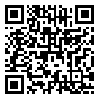Purpose: The purpose of this study was to investigate the effect of kinesio-taping on the range of motion of cervical lateral flexion point in subjects with trigger point in upper trapezius muscle.
Methods: A total of 32 subjects with myofascial trigger point in upper trapezius participated in this randomized controlled trial (RCT). The subjects were randomly assigned to two groups: Kinesio-taping (n=16) and KT placebo (n=16). The ipsilateral and contralateral cervical lateral flexion range of motion was measured before and immediately after treatment in both groups using a standard goniometer. Paired t test was used to determine any significant difference in the range of motion after treatment sessions compared with pretreatment score in the control and experimental group. Analysis of covariance (ANCOVA) was calculated to determine the significance of differences between two groups in posttest scores, with pretreatment scores used as covariates in the analysis.
Results: Statistical analysis (paired t test) revealed no significant increase in cervical lateral flexion range of motion in both ipsilateral and contralateral side immediately after KT application in both groups compared with pretreatment score (P>0.05). In the ANCOVA, while controlling for pretest scores, no significant difference was found between the two groups (KT and placebo) after treatment sessions (P>0.05)
Conclusions: Application of kinesio-taping cannot immediately produces an improvement n cervical lateral flexion in subjects with trigger point in upper trapezius muscles.
Received: 2015/08/7 | Accepted: 2015/11/23 | Published: 2016/10/1
| Rights and permissions | |
 |
This work is licensed under a Creative Commons Attribution-NonCommercial 4.0 International License. |




